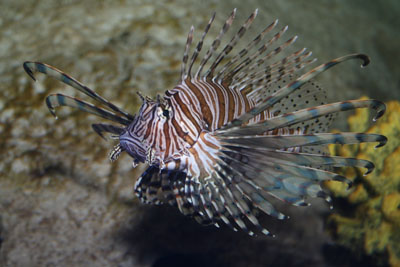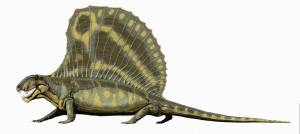Dear Governor Beshear.
It was with great sadness that I learned of the severe injury done to the Commonwealth of Kentucky’s reputation. It is a sad day when Kansans can look down on Kentucky, that at least Kansas is not trying to attract an amusement park catering to the unscientific concept of young earth creationism.
Worse still, Kentucky is offering tax incentives to attract further development by Answers in Genesis, a group that can only further decrease our reputation as a state that values higher learning. All this in a state that is home to such treasures of paleontology as Big Bone Lick and the rich history of hundreds of millions of years of evolutionary history are visible to anybody who bothers to look at every road that cuts through a hill.
It wouldn’t be a slap in the face to all of my fellow alumni of the University of Kentucky, devaluing the doctoral diploma that I proudly display in my office and denigrating the verifiable and evidence based science taught in our land grant universities and private colleges if Kentucky wasn’t looking to help fund an ethically bankrupt amusement park. The presence of the Creation “Museum” is embarrassment enough, but to know that my tax dollars may help to fund its expansion, when researchers at UK and University of Louisville face tight budgets while performing ground breaking scientific research, it is simply too much.
Today, you helped to tarnish my hard won degree with the scorn of the academic community. In an instant, my years of scholarship became worth a tiny little bit less. I will have to defend my state as I once did as a child. “Yes, we wear shoes,” becomes, “No, we aren’t all stuck in a scientific stone age.”
What hue and outcry would there be if Ken Ham’s execrable organization was teaching children that God’s way was to learn that left and right are actually right and left? And if you don’t follow the Ham’s specific and narrow interpretation of biblical direction, society will collapse entirely. This is the scientific equivalent of creationism. Students come prepared to ignore anything taught in biology classes, and no level of evidence will convince them that learning about how life evolves is of value, but will guarantee their damnation.
Imagine then, students unable to read their English texts from left to right, as their interpretation of those directions means that no book can make sense to them. Students walking through a line in the cafeteria, gathering their food in their hands and finally depositing it on a tray. Students inoculated against evidence don’t even know that their educational skills are stunted until they are faced with an honest presentation of evolution at the college or university level.
Perhaps saddest of all of this is that the tens millions of dollars already spent on this monument to prideful ignorance goes not to feed the hungry or clothe the poor (or even to clothe the hungry) but to enrich the purveyors of a plainly dishonest interpretation of all types of scientific evidence, biological, chemical, physical and astronomical.
And to what end? The hope that if people remain ignorant of the reality surrounding them, the facts of evolution, explained by the modern synthesis of the theory of evolution by natural selection, that their faith can remain intact.
Ignorance is bliss to Ken Ham and Answers in Genesis, ignorance and fear of a wrathful and genocidal god. I wonder, shall the amusement park include a wave pool filled with the simulated bobbing bodies of the dead, as the Museum cheerfully displays the Genesis account of the Great Flood via computer animation and artistic dioramas of the wholesale slaughter of the world? Having been to this “Museum”, I can say that no depth is too low to subject young minds to in order to scare them away from inquiry and learning.
What shall I expect next from the government of our fair Commonwealth? Should UK and the University of Louisville begin to offer degrees in astrology? Will the UK medical school offer coursework in homeopathy? Perhaps you could establish a Department of Divination to direct the government’s future goals and to offer you a morning horoscope? Or should I expect some other discipline of magical thinking to be given the stamp of approval of the state?
Why did you choose to encourage what can only harm our state’s reputation? Was it a promise of 30 pieces of silver (a temporary increase in construction jobs) to betray our good name?
Please do not count on my vote in the next primary election. I will remember your intentional step backwards on that day and cast my vote for any challenger. And should I look to spend money on a day at an amusement park, I will do so without guilt in neighboring Ohio, at King’s Island.
Sincerely and Remorsefully,
Robert Bevins, PhD




 Lion fish are voracious predators
Lion fish are voracious predators
